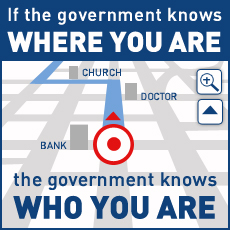Supreme Court GPS Ruling: Bringing the 4th Amendment Into the 21st Century


On Monday the Supreme Court issued a landmark decision protecting privacy in the digital age. In U.S. v. Jones, a unanimous Supreme Court held that the police and FBI violated the Fourth Amendment when they attached a GPS device to Antoine Jones’s car and tracked his movements for 28 days. While the case turned on the fact that the government physically placed a GPS device on Mr. Jones’s car, the implications are far broader. A majority of the justices acknowledged that advancing technology, like cell phone tracking, gives the government unprecedented ability to collect, store, and analyze an enormous amount of information about our private lives.
Monday’s decision suggests that the Court is prepared to address that intrusion into privacy. Justice Samuel Alito delved to the heart of the matter when he explained that “in the pre-computer age, the greatest protections of privacy were neither constitutional nor statutory, but practical.” The architecture of mass surveillance had not yet been constructed. A person walking down the street would barely be noticed, and there would be no permanent record of his movements.
Today everything goes down on our permanent records. This is most obvious on the Internet, where every mouse click can be monitored and recorded. Every search term we type — an anxious quest for information about a newly diagnosed health problem, a nostalgic query to learn about the life of an ex-boyfriend — is lodged in the vast data warehouses of Google. One of Gmail’s big selling points is that “you will never need to delete another message.”
But perhaps the most profound change is taking place not in cyberspace but in real space. The technology of surveillance is transforming our outdoor spaces so that they are just as susceptible to monitoring as the online world. Between networks of surveillance cameras, the possibility of GPS tracking, and the reality that the vast majority of Americans carry cell phones that track our every movement, there is no longer a technical barrier to mass surveillance of Americans’ movements. When this type of mass surveillance is combined with the rapid development of facial recognition technology, it may soon be possible for any law enforcement agent to identify a person and pull up a dossier of information about him, this represents a serious erosion of the privacy that Americans rightly expect and have traditionally enjoyed.
As practical barriers to mass surveillance fall, legal barriers become all the more important. The Jones decision is a heartening sign that as technology advances, the Supreme Court will not allow the Fourth Amendment to fall behind.
Learn more about location tracking: Sign up for breaking news alerts, follow us on Twitter, and like us on Facebook.



